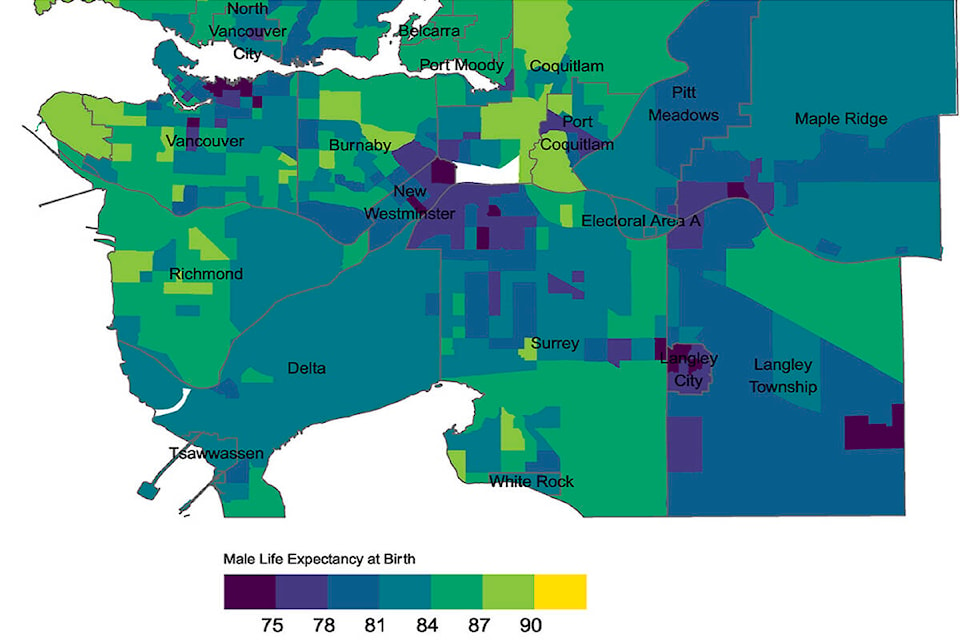Maple Ridge residents learned this week that the life expectancy in Haney is significantly lower than those living in other, more affluent Lower Mainland neighbourhoods.
Jessica Yu, a doctoral candidate at UBC’s school of population and public health, was the lead author of a study published this month in Health and Place.
The study found that while Vancouver is one of the healthiest cities in the world, the life expectancy in the Metro Vancouver region varies by as much as 10 years, depending on which neighbourhood you live in.
The study found the Downtown Eastside and Haney as two neighbourhoods where people haven’t been as long lived.
“We are seeing high inequality within a city that has a relatively high life expectancy overall,” said Yu.
At the 2016 census life expectancy was 86.6 years for women and 82.5 years for men in Metro Vancouver. However, certain areas such as the Downtown Eastside and Haney in Maple Ridge had a life expectancy of less than 75 years for both women and men, according to the research.
Life expectancy was highest in West Vancouver, West Point Grey, northwest Richmond and parts of South Surrey and Coquitlam.
Mary Robson of the Friends in Need Food Bank in Maple Ridge was skeptical that one neighbourhood of the city would see markedly different life expectancy from others. She has heard a lot of chatter about the UBC story. She confirmed the food bank’s clients generally come from the historic downtown area, which has been known as Haney.
“We’re pretty spread out through the community,” she said of the food bank clients. “But I would say the majority are from the downtown area.”
It’s an issue that warrants future study, according to the researchers.
The study is the first in Canada to analyze life expectancy and causes of death using census data over a period of more than a quarter-century. Yu and her team harmonized information on age, sex, cause of death, residence and location of death with Statistics Canada population data from census years 1991, 1996, 2001, 2006, 2011, and 2016.
“This study was undertaken in response to calls (Provincial Health Services Authority, 2016) for more research and solutions to tackle historical and present health disparities,” says the study. “These disparities may result from systemic injustices, such as inequitable health care and nutritional food access, and social and environmental determinants, such as income and race inequality and urbanisation.
“These factors affect not only mortality rates of chronic diseases over time, but they were also drivers during recent acute health crises, such as the opioid overdose and covid-19 pandemic. By quantifying neighbourhood- and sub-neighbourhood-level indicators of health, we observed spatial heterogeneity and clusters of cause-specific deaths in one of the healthiest cities in one of the healthiest countries of the world.”
The study reveals more about death and its causes at the neighbourhood level in Metro Vancouver than any before, according to the authors. However, attributing those outcomes to specific policies or social factors is work that’s still to come.
READ ALSO: 105 containers that fell from cargo ship near B.C. believed to have sunk: coast guard
READ ALSO: Plan to replace diesel with wind energy buoy launched by University of Victoria
Have a story tip? Email: ncorbett@mapleridgenews.com
Like us on Facebook and follow us on Twitter.
